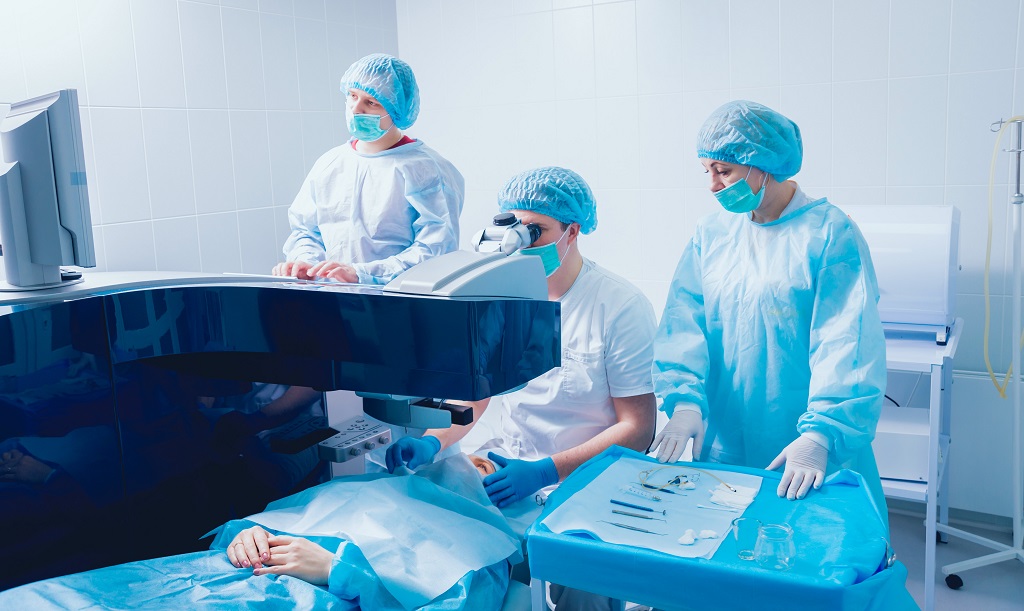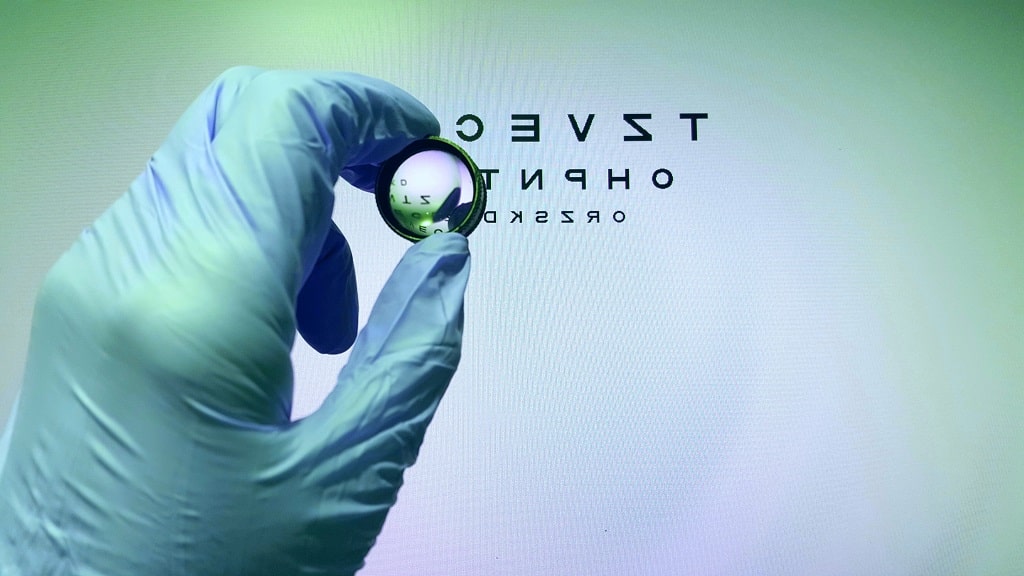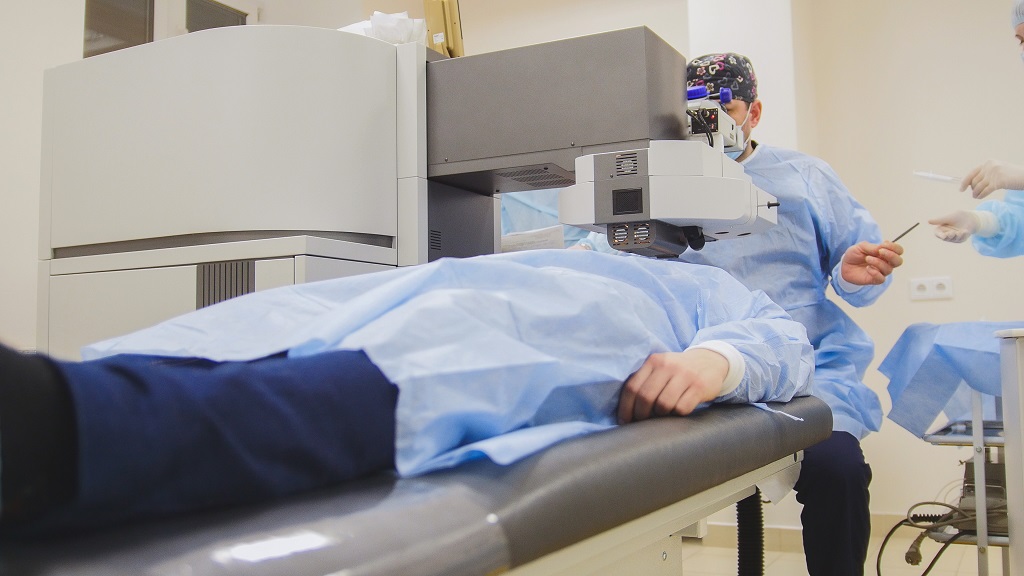
Updated: February 02, 2024

Innovations in laser technology have had a tremendous impact on medical care and it has had likely more impact on the types of eye surgery than any other specialty in medicine. Every structure of the eye or surrounding tissues has been treated with various lasers.
The LASIK eye surgery acronym stands for Laser-Assisted In-situ Keratomileusis. This is a common laser eye surgery that is suitable for treating many conditions such as nearsightedness (myopia), farsightedness (hyperopia), and astigmatism. This is one of the most popular types of eye laser surgery and it uses a femtosecond laser to precisely alter the shape of the corneal tissue in the natural lens to improve patient eyesight. Many patients choose to get LASIK to replace contact lenses or glasses.
As there are many laser eye surgery types, not everyone is a candidate for this vision correction surgery.
LASEK is another laser eye surgery procedure and it is an alternative to the LASIK and SMILE procedures.
The best candidates for LASEK or surface procedures are those patients with thin corneas, asymmetric topographies, or those involved in combat sports.
It is a different type of laser eye surgery and it has the advantages of LASIK in that there is very quick visual recovery.
SMILE is a good choice for those aged 18 to 60 with stable glasses or contact lens prescription. Patients with nearsightedness and astigmatism are the best candidates.

This presbyopia surgery is also referred to as Advanced Surface Ablation (ASA).
You might be wondering what type of laser eye surgery is best for you. Patients aged 18 to 60 with stable glasses or contact lens prescription or those needing astigmatism treatment are the best candidates for PRK.
Refractive lens exchange (RLE) is also referred to as clear lens extraction (CLE) and it is a procedure that corrects cataracts by altering the corneal tissue. During this refractive surgery, the doctor will carefully make a small incision to remove the natural lens on the edge of the cornea and replace it with a silicone or plastic lens. This refractive lens replacement surgery can be used to correct both nearsightedness and farsightedness. In addition, this laser eye procedure is used to help correct dry eyes, thin corneas, and other minor eye problems. You may opt to combine this procedure with LASIK or a LASIK-related procedure so you only have to endure one recovery process. In some cases, additional procedures are required to help correct astigmatism, but this is something that your laser eye surgeon will discuss with you when the time comes.
There are different types of laser treatment for eyes so it’s important to choose the corrective eye surgery that’s best for you. When it comes to CLE, it is ideal for patients who have short-sightedness (myopia), long-sightedness (hyperopia), and/or astigmatism. The most ideal candidates for the type of procedure are around age 45 (at a minimum) and wear bifocals or multifocal lenses. This procedure is also suitable for those with high prescriptions or those who aren’t good patients for laser eye surgery.
If you suffer from extreme nearsightedness, another laser procedure that you may consider is IOL or intraocular lens surgery. During the IOL implantation, your surgeon will place microscopic lenses behind the iris but in front of the eye’s natural lens. This implanted lens allows light rays to properly focus onto the retina to create a clear vision distance and can reduce the need for wearing thick glasses or contact lenses.
The ideal patient for an IOL procedure is someone who has a high level of myopia yet isn’t yet presbyopic. They don’t have any eye disease and they don’t suffer from any iris, pupil, or corneal abnormalities. Phakic intraocular lens implants can help those with high levels of myopia as the risk of retinal detachment is lower.

Starting about age 40 the human crystalline lens loses its ability to focus up close. This is progressive from age 40 to age 65. It happens to all patients. When patients have laser vision correction the surgeon can alter the power of one eye to be best at distance and the other at near. This is called monovision or laser blended vision. About 70% of patients over age 40 who wear contacts use monovision to be less dependent on glasses for the close-up tasks such as reading. About 70% of patients undergoing laser vision correction over age 40 are candidates for laser blended vision. If they do not tolerate it the eye can be corrected for distance like the alternate eye and the patient can then use reading glasses.
Laser Blended Vision is another eye laser treatment type that is best suited for patients over age 40 that want to minimize or eliminate the need for reading glasses.
Pan-retinal photocoagulation is used for diseased eyes. For patients who have diabetes or have had retinal vein occlusions, their doctor may recommend retinal photocoagulation to preserve vision. Abnormal blood vessels can grow in these patients and by doing photocoagulation the abnormal vessels can regress and the best vision can be maintained. Pan-retinal photocoagulation should not be confused with laser vision correction procedures. The prior is for diseased eyes that could be blinded if the diseases are not treated.
SLT or Selective Laser Trabeculoplasty is a form of laser surgery to reduce eye pressure in patients with an eye disease called glaucoma. In glaucoma, the pressure within the eye can be so high that it damages the nerve of vision called the optic nerve. SLT can be used in combination with medications to lower eye pressure. With SLT the laser light is applied to the fluid drainage tissue. Over time the laser treatment allows for increased outflow of fluid with the goal of lowering the overall eye pressure.

There are countless positive success stories from laser-based procedures. Of course, all types of laser eye surgery come with some level of risk, so it’s important that you’re aware of these potential complications beforehand. We’ve outlined only a few of the potential possibilities of side effects from various types of corrective laser eye surgery to keep in mind.

Different types of laser eye surgery cost different amounts. It’s not easy to provide a straightforward answer to this common question as varying factors impact the cost of the operation. For example, there are different levels of service and various types of technology that are available that impact the bottom line. The location in which you’re getting surgery can also impact the price.
Here are some factors to keep in mind:
Generally speaking, the cost of laser eye surgery in 2024 ranges anywhere between $2,000 and $3,000 per eye. This price typically includes preoperative and postoperative care in addition to follow-up procedures to make sure that you are recovering as you should be. Although you might be tempted to search for laser eye surgeries from cheaper doctors, you could run the risk of choosing a surgeon that isn’t skilled or updated in the latest technologies and techniques. Just like most things in life, if it seems too good to be true, it probably is.
You can always ask your surgeon what is included in the quoted cost so you have a good understanding of expenses. You’ll want to ask about the technology that’s used and how many follow-up visits are needed. Patients often need prescription medications so make sure to ask your doctor all of these important questions when making your decision.
Medical lasers have had an immense impact on vision correction surgery over the past 30 years with over 100 million patients and 200 million eyes treated. To find out what procedure is best for you, a vision correction screening is the best next step at Discover Vision Centers.
You can contact our team by requesting an appointment through the website or by calling 816-478-1230.